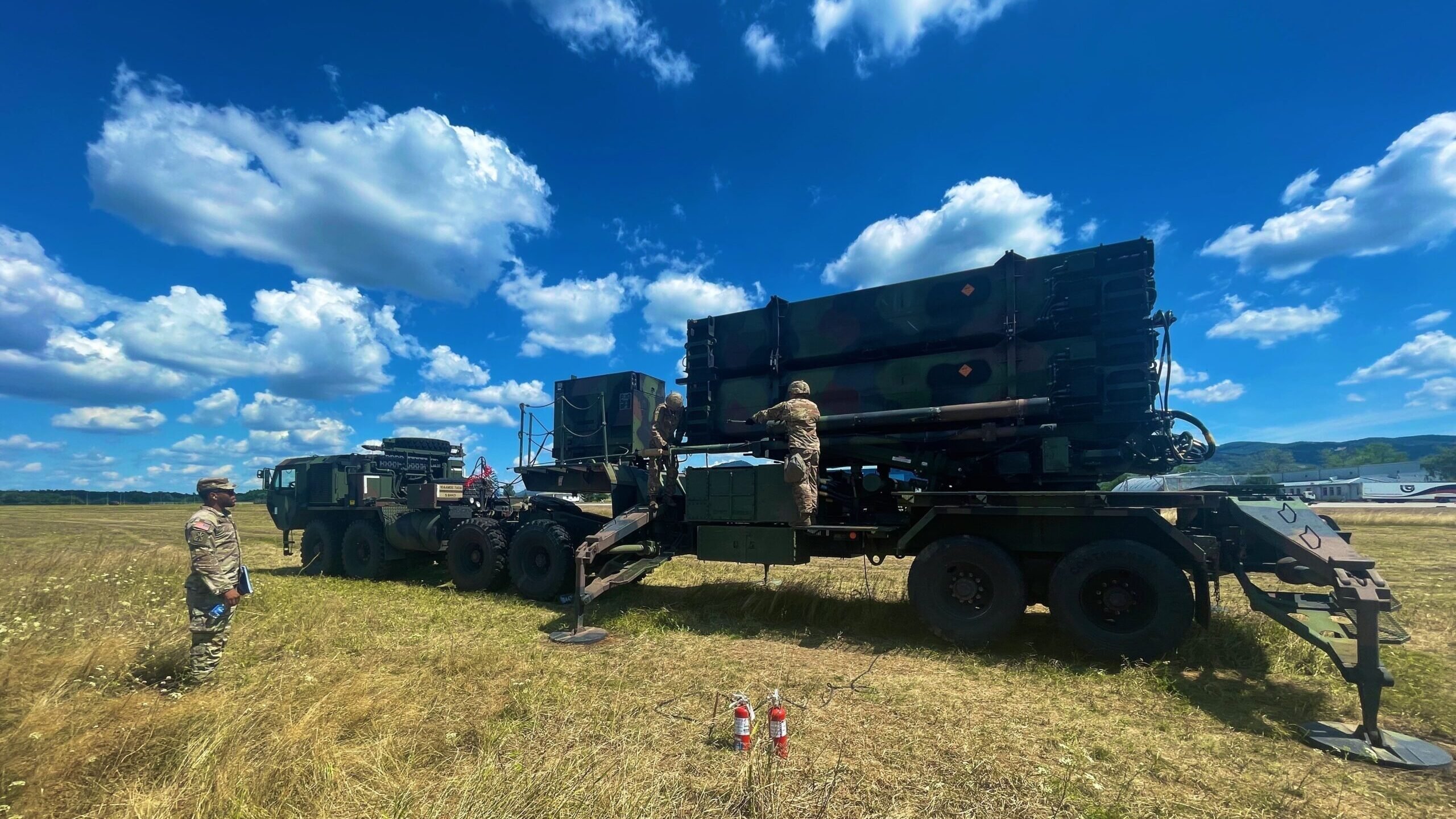ALERIE INSINNA

WASHINGTON — The US government appears to be finalizing plans to deliver the Raytheon-made Patriot surface-to-air missile system to Ukraine, with multiple outlets reporting that the Biden administration could announce its intent by the end of the week to transfer a single battery from US stocks.
And while the weapon system would provide the Ukrainian military with a leap forward in air defense capability — particularly in the realm of ballistic missile defense — experts raised questions about the impact that one Patriot battery could make on the battlefield, as well as the long-term ability for the United States to continue supplying Ukraine with replacement missiles for the expensive system.
With “no realistic prospect” for Russia to retake a large amount of territory after the Ukrainian liberation of Kherson, Russian President Vladimir Putin is directing attacks on Ukraine’s civilian infrastructure, banking on Ukrainian resolve to weaken as more people face harsh living conditions and bitter cold, said Michael O’Hanlon, a senior fellow with the Brookings Institution.
In this context, Patriot would be one more tool the Ukrainian military could use to protect apartment buildings, hospitals and energy infrastructure, he said.
“There’s no doubt that this series of Russian aerial bombardments of Ukraine has become the number one strategic challenge to Ukraine’s short term survival,” O’Hanlon told Breaking Defense. “I think Putin has correctly identified a weak spot, and he doesn’t even have to kill that many people to make the strategy potentially work. So anything and everything we can do to challenge that strategy, we should do.”
United Kingdom defense officials have repeatedly raised alarms this month that Russia is seeking to obtain hundreds of ballistic missiles from Iran, according to multiple outlets such as Reuters.
Should the Biden administration greenlight the delivery of Patriot to Ukraine, it could be used to counter that threat. But while Ukraine has been asking for Patriot for months, the system is not a panacea that will completely solve its problems, said Tom Karako, a missile defense expert with the Center for Strategic and International Studies.
“This is a political gesture of support,” he said. “What we’re sending, which I believe is one battery, is not going to protect Ukrainian cities, plural. It’s going to protect one spot somewhere. … The defended area of what we’re sending is going to be rather limited.”
During a Dec. 15 briefing, Pentagon Press Secretary Brig. Gen. Pat Ryder declined to comment on US plans to provide Patriot to Ukraine. However, he did address statements by Russian officials that such a move would be provocative, saying that Russia would not be allowed to dictate what security assistance the United States provides to Ukraine.
The Raytheon Technologies-made MIM-104 Patriot is a surface-to-air missile system designed to combat a range of threats, including aircraft, cruise and ballistic missiles, loitering munitions and drones.
A Patriot battery typically consists of anywhere from six to eight truck-mounted launching systems, each with four launch canisters that can accommodate up to four missiles at a time. A battery, which is manned by about 90 soldiers, also includes a radar used to detect and track targets, the control system, a high-frequency antenna mast and power generators, according to CSIS’s Missile Defense Project.
Patriot has been sold to more to more than a dozen operators worldwide, with the US Army as the system’s biggest user. Currently, the Army has about 60 Patriot batteries, said a spokesperson for the Army’s program executive office for missiles and space.
While that may seem like a lot, the Army’s Patriot battalions are in constant demand by combatant commanders, with some of the highest operational tempos across the joint force, Karako said. That will make it difficult for the US military to spare additional systems or missiles if Ukraine needs replenishment.
“We need to be careful about these scarce, precious assets,” Karako said. “While we’re only sending one battery, once it’s there, it’s probably not going to come back. And if they start expending munitions, they’re going to ask for more, right? And we don’t have just tons and tons of PAC-2s and PAC-3s [missiles] lying around that we can afford.
“That’s unfortunate. It’s sad, but this is a very high value asset,” he said. “And we do need to steward those assets for deterring a Taiwan conflict.”
Many of the details surrounding the long-term plan for training, equipping and sustaining a Ukrainian Patriot battery are still unclear, including how many launchers will be sent to Ukraine or what kinds of interceptors could be delivered.
Both the Patriot Advanced Capability-2 (PAC-2), which is a larger blast fragmentation weapon, or the Patriot Advanced Capability-3 (PAC-3), which is a hit-to-kill capability that directly strikes more maneuverable targets, could have utility for the Ukrainian military, Karako said.
Another potential obstacle is training and sustainment. It takes nine months for US operators to go through the Patriot training program at Fort Sill in Oklahoma, said the Army PEO missiles and space spokesperson.
“That could probably be compressed,” Karako said. “But it’s a not insignificant period of time.”
Experts also raised questions about the cost imposition of using a sophisticated and costly system like Patriot, which launches missiles that can cost millions of dollars, to shoot down cheap drones that have been part of Russian assaults.
“Patriot has been used in Saudi Arabia and [the United Arab Emirates] to defend against Iranian-supplied Houthi drones and missiles, but it’s an expensive way of doing business (though maybe not so expensive when avoidance of casualties and damage to infrastructure is considered),” said Byron Callan, a defense analyst for Capital Alpha Partners, in a Dec. 14 message to investors.
“Using a multi-million-dollar interceptor to shoot down a drone that costs $15,000 or more is an equation that will eventually not favor the defender.”
No comments:
Post a Comment